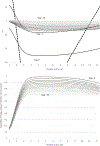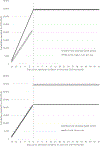Provider Incentives and Healthcare Costs: Evidence from Long-Term Care Hospitals
- PMID: 31130738
- PMCID: PMC6529222
- DOI: 10.3982/ECTA15022
Provider Incentives and Healthcare Costs: Evidence from Long-Term Care Hospitals
Abstract
We study the design of provider incentives in the post-acute care setting - a high-stakes but under-studied segment of the healthcare system. We focus on long-term care hospitals (LTCHs) and the large (approximately $13,500) jump in Medicare payments they receive when a patient s stay reaches a threshold number of days. Discharges increase substantially after the threshold, with the marginal discharged patient in relatively better health. Despite the large financial incentives and behavioral response in a high mortality population, we are unable to detect any compelling evidence of an impact on patient mortality. To assess provider behavior under counterfactual payment schedules, we estimate a simple dynamic discrete choice model of LTCH discharge decisions. When we conservatively limit ourselves to alternative contracts that hold the LTCH harmless, we find that an alternative contract can generate Medicare savings of about $2,100 per admission, or about 5% of total payments. More aggressive payment reforms can generate substantially greater savings, but the accompanying reduction in LTCH profits has potential out-of-sample consequences. Our results highlight how improved financial incentives may be able to reduce healthcare spending, without negative consequences for industry profits or patient health.
Keywords: Healthcare; financial incentives; nonlinear contracts; post-acute care.
Figures











References
-
- American Hospital Association (AHA). 2010. “TrendWatch: Maximizing the Value of Post-Acute Care.” Available at http://www.aha.org/research/reports/tw/10nov-tw-postacute.pdf.
-
- Arcidiacono Peter, and Ellickson Paul B.. 2011. “Practical Methods for Estimation of Dynamic Discrete Choice Models.” Annual Review of Economics 3: 363–394.
-
- Bajari Patrick, Hong Han, Park Minjung, and Town Robert. 2017. “Estimating Price Sensitivity of Economic Agents using Discontinuity in Nonlinear Contracts.” Quantitative Economics 8(2): 397–433.
-
- Boards of Trustees for Medicare. 2002. “The 2002 Annual Report of the Boards of Trustees of the Federal Hospital Insurance Trust Fund and the Federal Supplementary Medical Insurance Trust Fund.”
-
- Boards of Trustees for Medicare. 2014. “The 2014 Annual Report of the Boards of Trustees of the Federal Hospital Insurance Trust Fund and the Federal Supplementary Medical Insurance Trust Fund.”
Grants and funding
LinkOut - more resources
Full Text Sources
